 Lead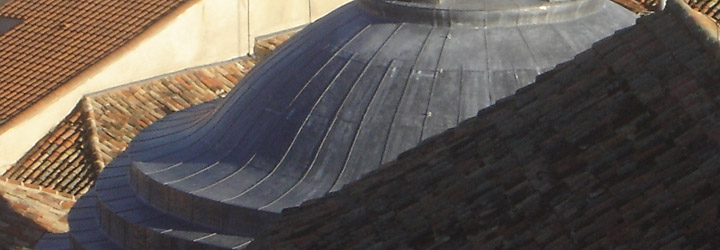
El Burgo de Osma Cathedral. Lead dome (caption) Appearance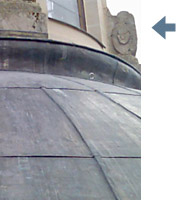
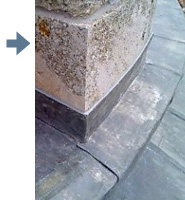
The natural colour of new lead is a light silvery metal, quite similar to natural zinc. Exposed to the elements, this colour loses its shine gradually whilst darkening a little over time to finish in a grey metal colour. The colour of the metal evolves more slowly on the facade than on the roof but in the end both attain the same colours, taking approximately 2 years and 1 year respectively to reach their mature state. 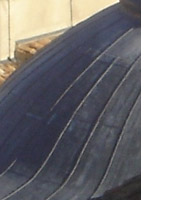
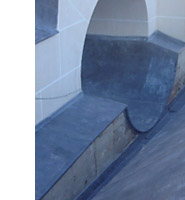
Compared to roof panelling in other metals that we use, lead coverings do not present the 'gabled' or wavy features on the metal sheet. This is due to the fact that lead lies very well on the support, due to its greater thickness and weight and nil mechanical resistance. This produces a resounding and solid visual sensation. 
Renovation of the cathedral dome, El Burgo de Osma, Soria (caption) For more information on the different finishes available, please refer to the other files on our metals. UpOther characteristicsLead is extremely malleable, capable of covering any shape. It has several qualities that make it particularly suitable for covering roofs and facades:
Nevertheless, we have to pay attention to the following aspects:
Lead can be used in the following systems of ours:
The following materials can be used as a direct support:
The following separating sheets/ventilation membranes can be used
Request for information
For technical consultancy on your project, please contact Quinta Metálica and we will be happy to help you.
Up DocumentsRepresentative worksSee more representative works |
© Quinta Metálica · c. Juan Bautista Escudero 273· Córdoba· 14014 Córdoba
Tel.: 91 896 1898· arquitectura@quintametalica.com
Legal Advice
 Ficha Plomo (366.10 kB)
Ficha Plomo (366.10 kB)